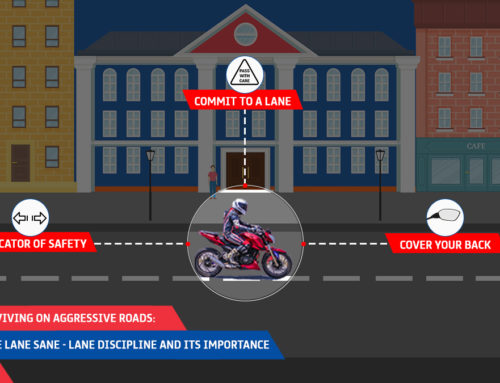As the world continues to be in the firm grip of a virus, we’ve all been asked to take measures which are unusual, but necessary if we want our normal life back. During these times, the responsibility lies with each one of us to do the right thing, stay safe, and arrest the spread of an outbreak, for which, a cure is yet to be found. Like us, our belongings are stationary too. Which makes it all the more vital that they are looked after during this phase. While we stay indoors, our two-wheelers remain exposed to external conditions during the lockdown and to ensure that like us, they too are in a healthy state when it’s time to resume life as we know it, here are some maintenance tips:
Sanitisation
There still is no confirmed answer about the virus’ lifecycle. Once the lockdown is over and you decide to ride, or if you have to use your two-wheeler for an emergency, its touchpoints will be in direct contact with your body, and it is essential that these points of contact are properly sanitised. In order to ensure that those areas are safe to touch, wear a pair of gloves and sanitise the handle grips, switches, mirror pods, the keyhole, and the tank area. It’s a good idea to sanitise the kick lever too if your two-wheeler has one and you use your fingers to turn the lever out before kicking. Wrap a kerchief or a napkin around your face if required and unless you are affected by the virus, make use of protective masks judiciously, so there are plenty available for our heroes who have to be out there during these times and risk their lives.
Maintenance
If your two-wheeler has a centre stand, use it instead of the side stand so that the weight of a stationary bike is not straining the tyres and the suspension. Start the engine and let it idle for about 5 – 8 minutes, at least twice a week, so that the engine oil circulates to keep all internal components lubricated and the battery can recharge. If your two-wheeler is fuel-injected, do not twist the throttle when you thumb the starter. The same also applies if it is carburetted and you are using the choke. If your two-wheeler’s battery isn’t brand new and is showing its age, you will have to rev the engine for the battery to charge, once the motor has warmed up to its operating temperature. If the above isn’t possible, follow the owner’s manual to disconnect the battery’s negative terminal for the duration your two-wheeler will hibernate.
Protection
For the duration that your two-wheeler will be stationary, keep it covered. If you haven’t invested in a proper protective cover, try fastening an old bedsheet over it. If that isn’t possible either, keep it parked where it’s not exposed to harsh sunlight and bird/tree droppings. Clean the drive chain if it’s dirty and keep it lubricated to protect it from rust. Check the tyre pressure once in a fortnight and maintain recommended air pressure if possible. Rodents are known to chew into cables and plastic components when a vehicle is stationary for too long. Park your two-wheeler away from drain covers, sewage lines and other such susceptible areas.
Also Read: Two-wheeler Maintenance – The right way to clean a Motorcycle
It is an unprecedented situation which all of us around the world find ourselves in. However, what each one of us needs to do to come out of this is extremely simple. Maintain social distance, do not touch your face, keep your surroundings clean, your hands and yourself sanitised, utilise the time wisely, be considerate, and stay at home.




